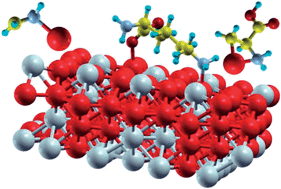Interfacing hard and living matter: plasma-assembled proteins on inorganic functional materials for enhanced coupling to cells and tissue†
Abstract
When bringing functional hard materials to biomedical applications, control of interfaces with cells and tissue poses one of the largest challenges. Assembly of protein monomers within an inert-gas-plasma constitutes a novel approach to synthesize strongly adherent bioactive coatings that dramatically enhance coupling to living matter. As proof of concept this is demonstrated for a Fe–Pd ferromagnetic shape memory transducer that is functionalized with the amino-acid, L-lysine, by plasma-treatment, resulting in flexible, yet ultra-durable coatings. Containing high amounts of NH2 functional groups, they fulfill all requirements for strong adhesion of cells and tissues. This is confirmed by cell tests with living NIH/3T3 embryonic murine fibroblasts that demonstrate excellent biocompatibility, exceeding conventional poly-L-lysine coatings in terms of cells focal adhesion density. The physics and chemistry behind these scenarios are unraveled by employing ab initio computer calculations. This combined approach opens the way for plasma-assisted functionalization strategies for a broad class of metals and semiconductors with polypeptides.


 Please wait while we load your content...
Please wait while we load your content...